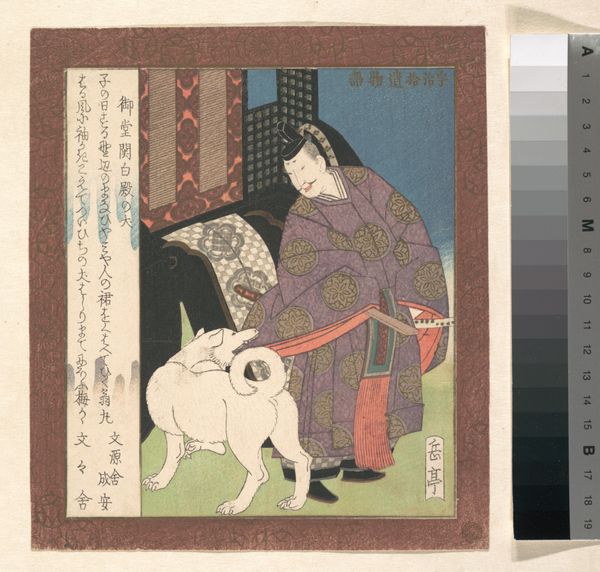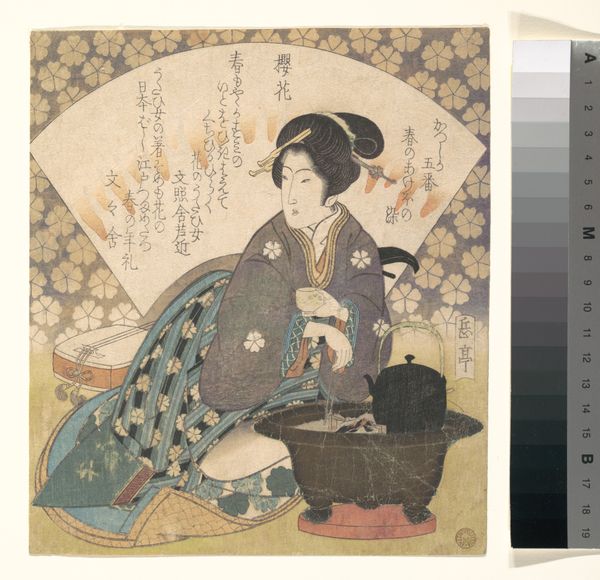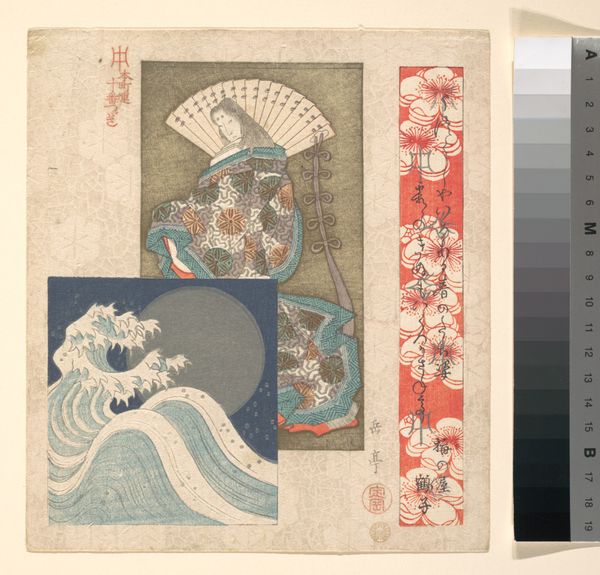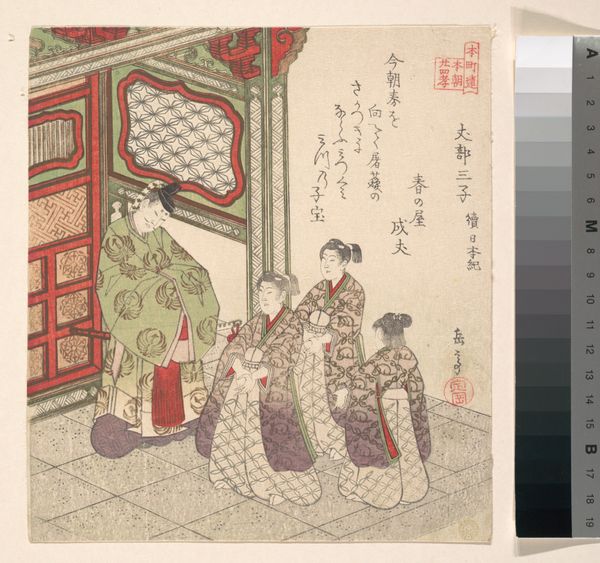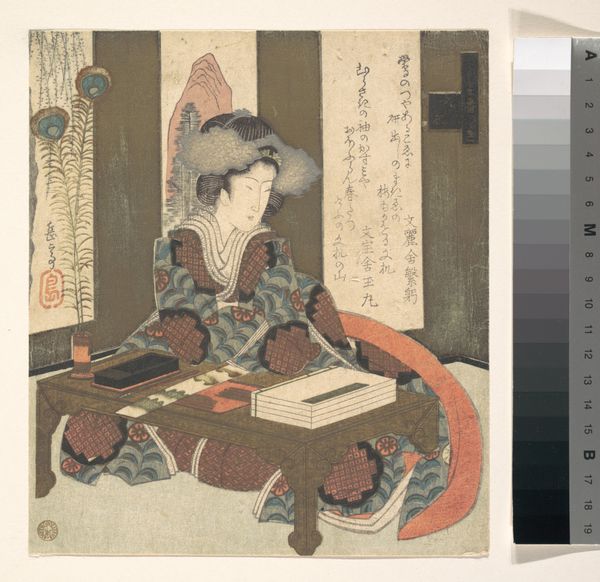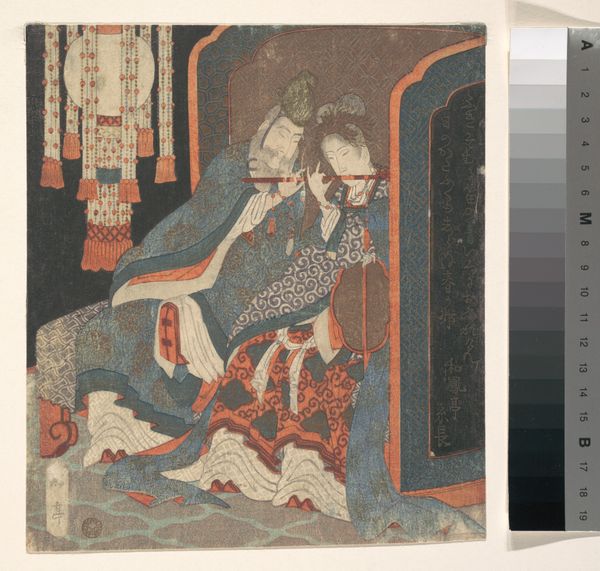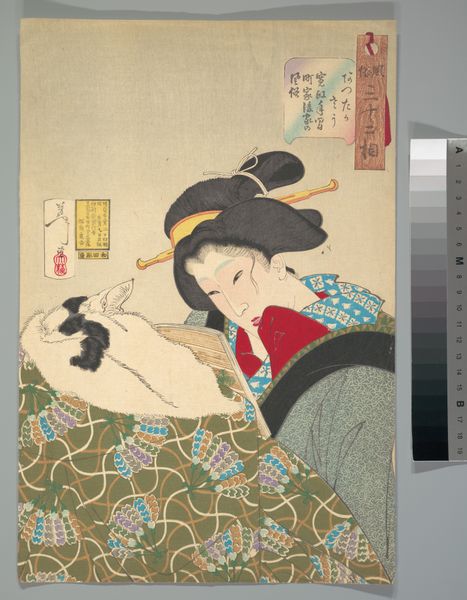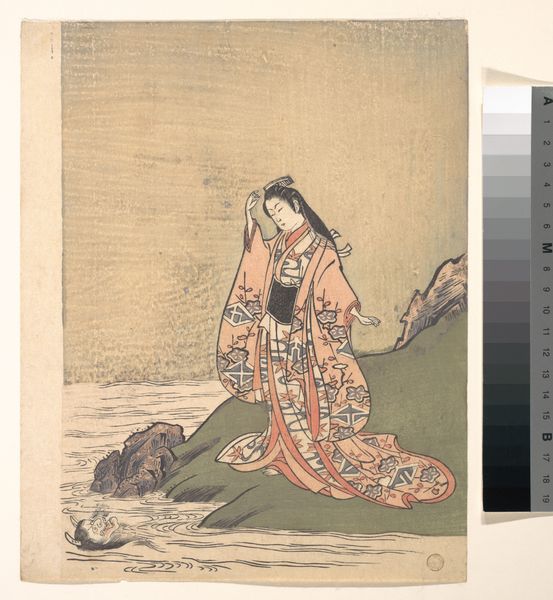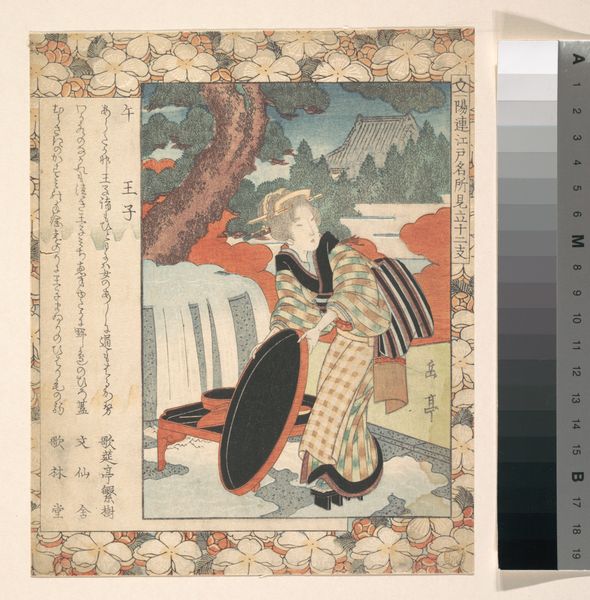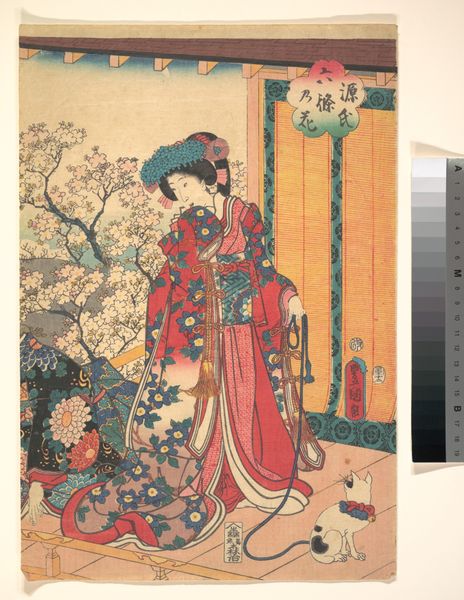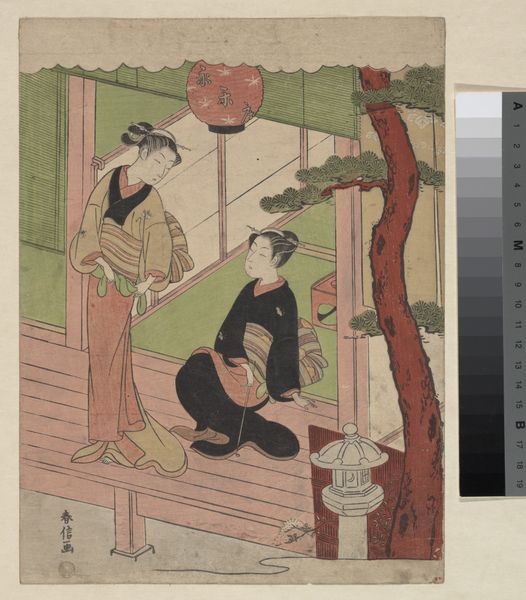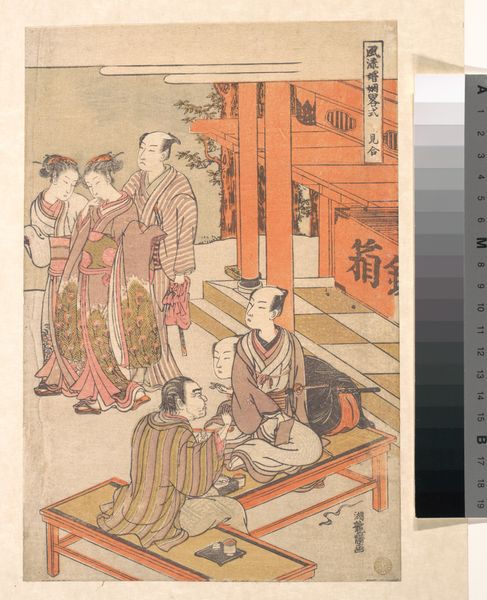
print, woodblock-print
#
portrait
# print
#
asian-art
#
ukiyo-e
#
woodblock-print
Dimensions: 8 5/16 x 7 7/16 in. (21.1 x 18.9 cm)
Copyright: Public Domain
Curator: This woodblock print, created by Yashima Gakutei sometime between 1810 and 1830, invites us to consider the ukiyo-e tradition through a fresh lens. Editor: Immediately, it whispers a kind of subdued drama. The color palette, though limited, is captivating and this pattern feels like it's closing in...almost stifling, in a way. It draws you in. Curator: It's the materiality, right? The flat application of color inherent to the woodblock print. It denies a traditional sense of depth, almost flattening the woman within her domestic space. Notice, too, how the intricate patterning on the kimono echoes the background, highlighting her connection to her surroundings. Editor: Absolutely, the details on the garment. It's this ornate blue gown, adorned with almost these coppery floral blooms; but I agree, that patterned backdrop becomes more pronounced by comparison. You almost miss its visual weight upon initial glance. She seems trapped. Do you agree, or am I letting the visual texture run wild here? Curator: Not at all. The technical constraints of ukiyo-e, carving these details into blocks, is labour-intensive. Each print, each pattern becomes evidence of this labor and the commercial exchange between the artist and publisher, as well as the audience consuming the piece. Editor: Ah, so each repeating floral bloom speaks not only to aesthetic sensibilities, but to commerce and craftsmanship! Tell me about the face here...she almost looks melancholic. Is it just the bowed head, the averted gaze? Curator: Perhaps, but the lack of overt emotion is typical of ukiyo-e portraits. They aim to capture beauty and fleeting moments, rather than interiority. Editor: Which only amplifies it for me. You know? A brief glimpse into a world, and with no direct emotive keys… it’s strangely effective. But with that context in mind it becomes clear why this particular print currently resides in the Metropolitan Museum of Art. Fascinating! Curator: It is. And how the consideration of labor, consumption, and beauty combine to tell its story across centuries.
Comments
No comments
Be the first to comment and join the conversation on the ultimate creative platform.
